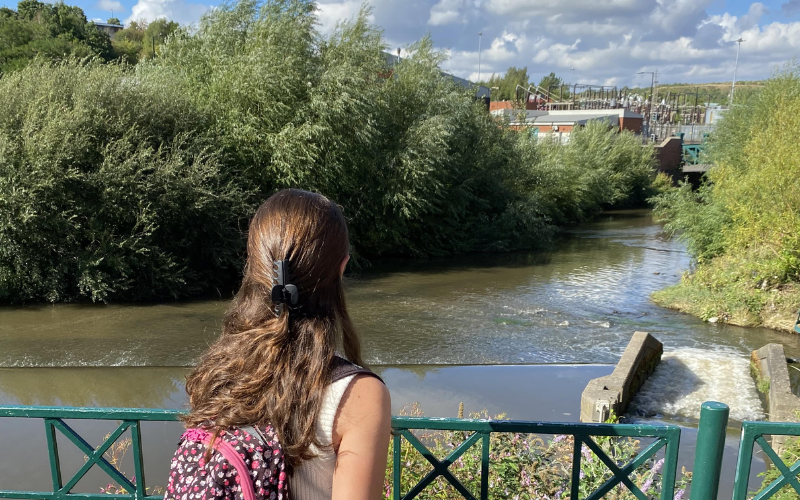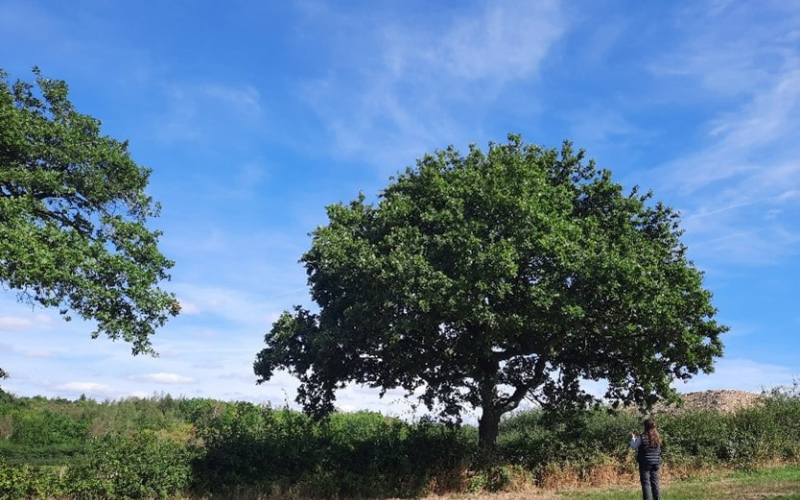During my time at Ecus I met so many people passionate about the work they do. I felt very welcome and the staff went out of their way to help me learn and provide me with reading materials they thought I’d find interesting. It helped to give me an insight into what I could do with my degree in the future.
To begin, I worked with the Marketing Team learning about different styles of publicity and how social media can help the company grow further. I got to design some of my own social media posts using Canva, which allowed me to produce professional looking infographics. The Data Manager also helped me expand my skills set further, by showing me pivot tables and how they can be used to interpret data – an important skill to develop.
I went on to work with the Archaeology and Heritage Team and I learned so many interesting facts. A tiny seed or grain of pollen can be carbon-dated to determine its age and predict the age of surrounding artefacts. This is a really useful example of how environmental studies can fit into many different areas. I learned how to use QGIS – a system which lets you layer up maps from different ages and measure between them. Poppy Forshaw-Perring showed me how they use QGIS to map trenches. There are many functions available; too many to learn in one day! Zoe Richardson took me on a walk along the River Don pointing out heritage sights of interest. When we came to a weir she explained this was an example of the Heritage and Ecology teams at Ecus working together to help fish swim upstream and increase surrounding biodiversity.

I spent a few days with the Ecology team on site visits and bat surveys. During one dusk bat survey we heard lots of common pipistrelles. Helen Hinchcliffe explained that these are one the most common bat species – as small as a mouse!. It was fascinating to learn that different bat species have unique call frequencies, which makes it easier to determine what species are flying about when you can’t see them in the dark. I discovered that the team often have to visit unusual sites when I went to assess a prison with Joe Travis for potential bat roosts. He also took me to a nearby nature reserve and explained how they assess ponds for great crested newts using the habitat suitability index.
Joining the Arboriculture Team, I accompanied Dave Farmer to a farm. We assessed oak trees and hedges in need of protection. I was interested to discover a fungal infection of the trunk of one of the oak trees, observable by how the tree had grown and bulged around the infected area. Dave let me use a measuring device with a laser to accurately measure the tree’s crown, which also cleverly works out the height of a tree, saving time and trigonometry calculations. Dave taught me about RPAs (root protection areas) – the area of ground around a tree that should not be disturbed, so its roots and the soil are maintained if construction work is happening nearby.

Next, I visited the Landscape Team with Kristina McKie. My first thought was ‘this will be fun choosing pretty flowers’ but as it turns out there’s a lot more to think about than colours. There are important criteria to consider, such as how far away from a building you can plant a tree, the soil pH, or how a plant will look throughout a year (seasonality). Kristina also explained the difference between hard (paths, benches) and soft (plants, trees, grass) landscape. The team works closely with ecology to maximise biodiversity on projects and create habitats for certain species.
I have really enjoyed my time with Ecus, and it has taught me a lot about working life as well as given me an insight into the environment sector. Thank you to everyone who has helped me.




